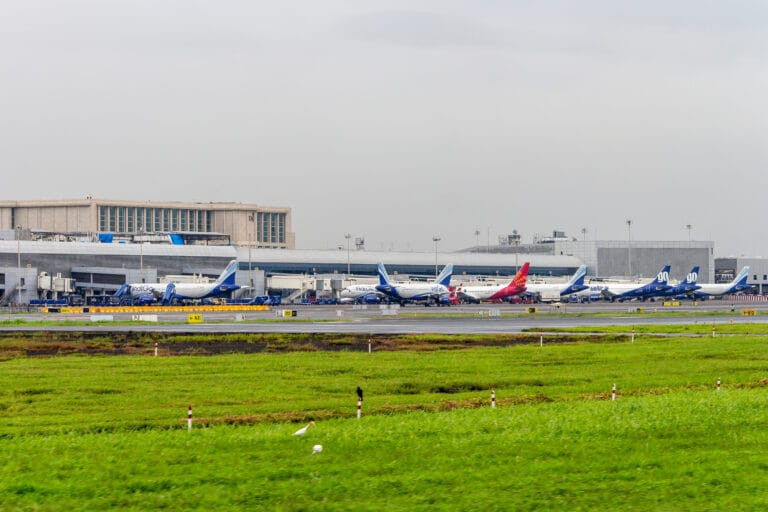The integration of over 30,000 refugees into DHL Group’s workforce since 2015 presents not only a significant human development milestone, but also a forward-looking labour strategy with direct relevance for the air cargo and logistics sectors. This milestone underscores the dual imperatives of economic inclusion and workforce resilience in an increasingly constrained global labour market.
For air transport policymakers, the broader implications are clear: labour market integration programmes such as DHL’s can act as a lever to offset demographic headwinds, meet operational demands, and support sustainable trade facilitation across complex multimodal supply chains.
Labour inclusion
DHL’s Chief Human Resources Officer, Thomas Ogilvie, noted that, “The rapid integration of refugees into the primary labour market is not only a prerequisite for social integration, it’s also in the German economy’s own interest. It relieves pressure on social systems and helps mitigate the effects of demographic change.”
Eurostat forecasts suggest that Germany could face a reduction of up to 6 million in its working-age population by 2035. The air cargo industry—reliant on ground handlers, warehouse personnel, and sorting staff—has already begun to feel the impact of these labour shortages, particularly at major hubs in Frankfurt, Leipzig, and Cologne. DHL’s workforce integration initiative, therefore, offers a replicable model of aligning social inclusion with sectoral workforce needs.
Operational deployment
DHL reports that the majority of its integrated refugee workforce originates from Syria, Afghanistan, and Ukraine. Initially employed in frontline functions—parcel sorting, last-mile delivery, and basic warehousing—many individuals have since moved into supervisory, technical, or vocational roles. Notably, approximately 350 have completed apprenticeships.
Given the sustained rise in air cargo volumes—5.7 percent globally in 2024 according to IATA—pressure on handling capacity has become increasingly acute. The ability to draw from an inclusive labour pool supports operational continuity, particularly in time-sensitive cargo environments such as pharmaceutical distribution or e-commerce fulfilment.
Skills, language, and digital training
Language proficiency remains a foundational enabler. DHL has invested in a proprietary language learning application, integrating professional vocabulary and customer interaction simulations tailored for operational use. This is vital in regulatory-sensitive environments, such as those handling dangerous goods or bonded cargo.
An independent training consultant in Frankfurt noted, “The challenge in logistics is operational fluency—quick and accurate communication under pressure. DHL’s language and onboarding tools directly address that.”
DHL has also deployed mentoring and job application programmes and reports that more than 18,000 employees have voluntarily supported refugee integration as translators, mentors, or local guides.
Institutional and regulatory engagement
DHL’s engagement with Germany’s Federal Employment Agency and the United Nations High Commissioner for Refugees (UNHCR) reinforces the policy architecture required to scale such programmes. The company also participates in the UN’s #WithRefugees campaign.
Ricarda Brandts, Chairwoman of the UN Refugee Agency, stated that, “The successful integration of refugees is a shared responsibility of politics, civil society, and business. DHL Group impressively demonstrates how companies can assume social responsibility and create concrete opportunities.”
A 2023 report by the Refugee Integration Insights Institute ranked DHL second among the world’s top 50 firms in terms of refugee employment outcomes. Key success factors included decentralised onboarding and robust internal communications across global divisions, with adaptation now underway in France, the Netherlands, Mexico, and Singapore.
Strategic relevance
DHL’s global aviation logistics infrastructure includes major hubs in Cincinnati (CVG), Leipzig (LEJ), and Singapore (SIN), all of which rely on efficient, scalable labour operations. In this context, refugee integration is not merely an act of corporate citizenship—it is increasingly part of DHL’s business continuity strategy.
The initiative also contributes to the company’s ESG scorecard. With the EU’s Corporate Sustainability Reporting Directive (CSRD) mandating increased disclosure on social impacts, DHL’s employment programme aligns with investor and regulatory expectations.
Furthermore, the redeployment of trained personnel across operational nodes proved critical during the post-Covid-19 recovery phase, highlighting the flexibility benefits of a well-integrated workforce.
Policy implications
UNHCR estimates more than 120 million forcibly displaced people globally in 2024. For logistics operators—especially those managing transit operations in conflict-adjacent zones—the structured integration of refugees into labour pools presents both a resilience mechanism and an opportunity for talent acquisition.
DHL’s model suggests a need for policy frameworks that combine public-sector facilitation (e.g., work permits, housing support) with private-sector scalability (e.g., training, employment, and social integration). In practice, this may include:
Fast-tracked accreditation for refugee professionals trained in logistics or related fields;
Funding mechanisms to support language and safety training;
Cross-border alignment on employment rights through bilateral or multilateral agreements.
Such policies would not only serve humanitarian aims but also enhance labour market responsiveness to the needs of capital.



